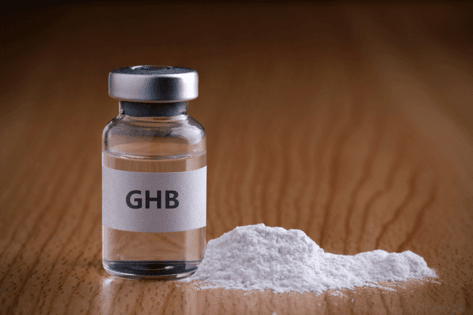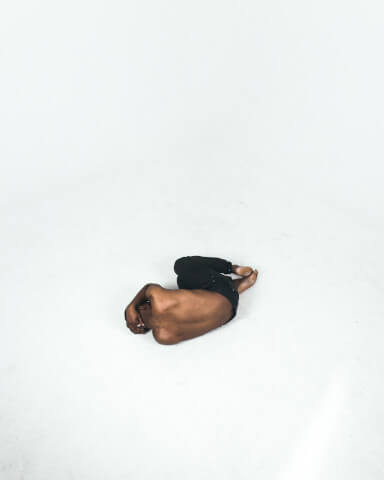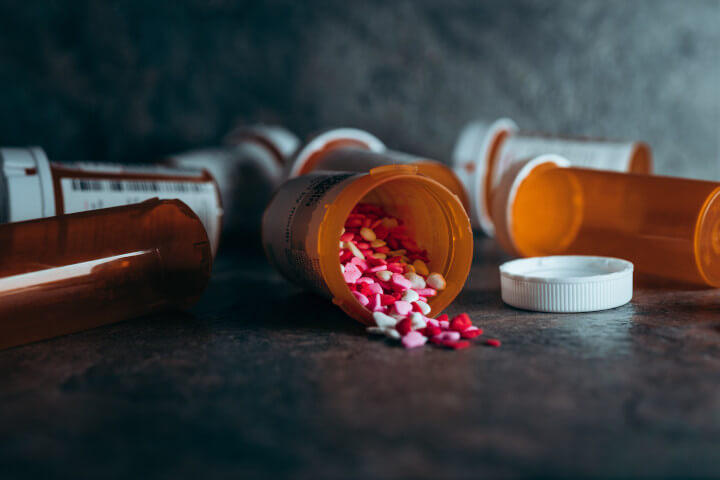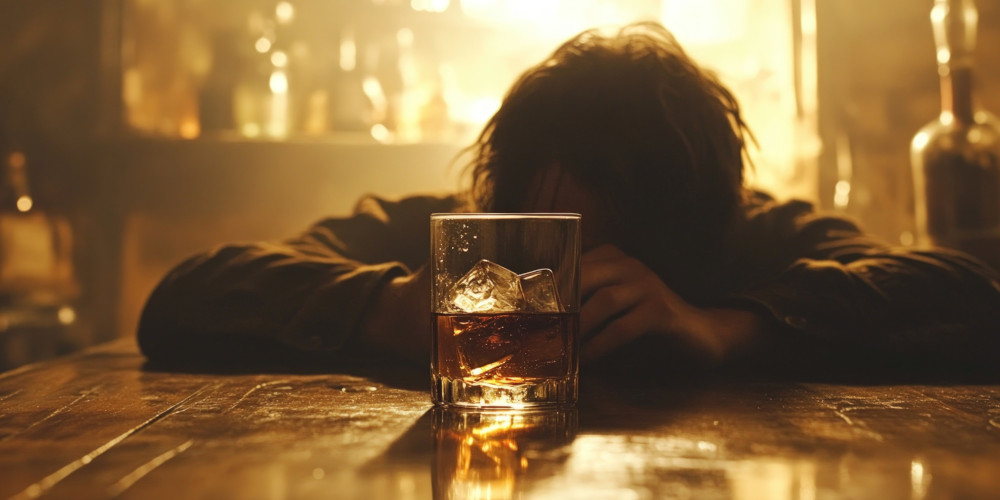GHB, or gamma-hydroxybutyrate, is a central nervous system depressant that is often used as a recreational drug due to its euphoric, relaxing and sedative effects. Although it was originally developed for medical purposes, including as an aesthetic and sleep aid, it is now mainly used illicitly for non-medical reasons. It is a very dangerous drug by all accounts as extreme cases of both overdose and withdrawal can be fatal. Many people know it as a date rape drug, yet most users consume GHB by choice. 
GBL, or gamma-butyrolactone, is sometimes used as an alternative as it is a product of GHB and is converted to GHB in the body. GBL is used in industrial solvents such as drain cleaners and paint strippers.
How does GHB work and How Is It used?
GHB is a depressant drug, meaning it slows down brain activity, and it has powerful sedative effects. It usually comes in liquid form and users carefully measure doses with syringes, pipettes or measuring cups and spoons. Less commonly, GHB is sold in powder form.
A typical dose is 1 – 2ml but those who have developed a tolerance may take higher doses. Additionally, illicit GHB may have different strengths depending on the source of the drug and the manufacturing process and users usually test out a new batch at low doses so as to avoid the risk of overdose. As little as a few drops more than a usual dose can cause an overdose.
In liquid form, GHB can cause chemical burns to the mouth and throat so it is usually mixed into a soft drink before it is swallowed.
It takes between 10 and 30 minutes for users to feel its effects and a GHB high usually lasts for between two and three hours.
Short and Long-Term GHB Effects
Many compare a high from GHB to the feeling of being intoxicated on alcohol.
Short-term effects of GHB include:
- Sedation
- Euphoria
- Loss of inhibitions
- Increased sex drive
- Amnesia
- Relief from anxiety
Long-term effects include:
- Addiction
- Negative consequences related to overdose and withdrawal
- Cognitive impairment
- Memory problems
What is GHB Withdrawal and Overdose?
When it comes to GHB, both overdose and withdrawal can lead to serious and life-threatening consequences.
What Is GHB Overdose?
As mentioned above, just a few drops can mean the difference between getting high and overdosing. Overdose often requires emergency hospital treatment.
Symptoms of overdose include:
- Vomiting
- Impaired coordination
- Respiratory depression (slow and ineffective breathing)
- Coma
- Confusion, irritation and agitation
- Hallucinations
- Seizures
In extreme cases, an overdose can lead to death. There are currently no approved medications available to reverse a GHB overdose and treatment is focussed on supportive management of symptoms. However, new research suggests anti-inflammatory drugs might be useful in the treatment of GHB overdose. 
The risk of overdose and unwanted side effects increases dramatically when GHB is combined with other central nervous system depressants such as alcohol and benzodiazepines.
What is GHB Withdrawal?
Physical dependence on, and increased tolerance to, GHB can happen rapidly, even after only a couple of weeks. This means a person will need to take higher and higher doses to achieve the same effect and they will experience unpleasant withdrawal symptoms if they abruptly stop using the drug.
People who are addicted to GHB have to take a dose every 3 to 6 hours to avoid withdrawal.
Depending on how long you have been using GHB and how much you use, you may experience severe withdrawal symptoms that require emergency medical attention. These can include:
- Anxiety
- Insomnia
- Tremors
- Sweating
- High blood pressure
- Increased heart rate
- Seizures
- Agitated delirium and psychosis
In rare cases of severe and untreated withdrawal, death may occur. You must consult with a medical professional before trying to quit GHB if you are dependent on the drug. A GHB detox should always be medically managed, preferably in a hospital. Severe cases require admission to ICU. Withdrawal symptoms are usually managed with high doses of benzodiazepines as well as a medication called baclofen. Other medications may be used at the discretion of the treating doctor. Withdrawal symptoms usually last between five and 12 days.
What is GHB? Medical use
In the 1960s GHB’s potential use in medicine was explored. It was used as an anaesthetic but fell out of use. Currently, GHB is approved for use as an anaesthetic in only two countries and, even there, is not in routine use. GHB in the form of sodium oxybate sold under the trade name Xyrem is a medication approved for certain sleep disorders such as narcolepsy. It is also being explored as a possible treatment for alcoholism. However, it is not an approved medicine in South Africa.
GHB in South Africa
The use of GHB is widespread and not limited to any specific country or region. GHB is a popular recreational drug that is used in many countries around the world. However, it is mostly associated with club and party scenes in urban areas, and its use tends to be more prevalent in certain communities and social circles.
It is reportedly prevalent in the ‘chem sex’ scene due to the fact it can lower inhibitions and improve libido.
While there is no comprehensive data on the use of GHB in South Africa, reports indicate that the drug is present in the country and is being used recreationally.
GHB is often sold in nightclubs and party scenes, and its use is especially prevalent among young people. In some cases, the drug is also used as a date rape drug, with reports of individuals being drugged and sexually assaulted after consuming GHB.
GHB was identified in South Africa as early as the late 1990s. A laboratory manufacturing the drug was detected and shut down in 1998. It had also been implicated in several date rape cases before it was officially designated as a controlled and illegal substance at the end of 2000. However, the availability of GHB on the black market remains a concern.
There have been several high-profile cases of famous people using GHB. One notable case is that of the singer George Michael, who was found in possession of the drug on multiple occasions. He reportedly also suffered a non-fatal GHB overdose in 2014.
GHB Street names
Street names for GHB and GBL include:
- Liquid G
- G
- Liquid ecstasy
- Liquid E
- Liquid X
GHB Treatment
Those with an addiction to GHB need to be detoxed by a medical professional. However, after the detox period, the individual should attend inpatient addiction treatment to increase the chances of long-term sobriety and prevent relapse. Considering the dangerous nature of the drug, a relapse can lead to death or disability making sobriety an incredibly important goal to achieve. 
A good addiction programme will try to get to the route of the individual’s problem and equip them with helpful tools to maintain their recovery in the long term.
Conclusion
GHB is a highly addictive drug that can cause life-threatening withdrawal and overdose symptoms. It gives users a profoundly relaxing experience and leads to the loss of inhibitions and memory making it an ideal substance used in cases of date rape. A medically managed detox and comprehensive addiction treatment are essential in treating GHB addiction. Many people have recovered from addiction to this substance and, if you are addicted to GHB, you can too.

